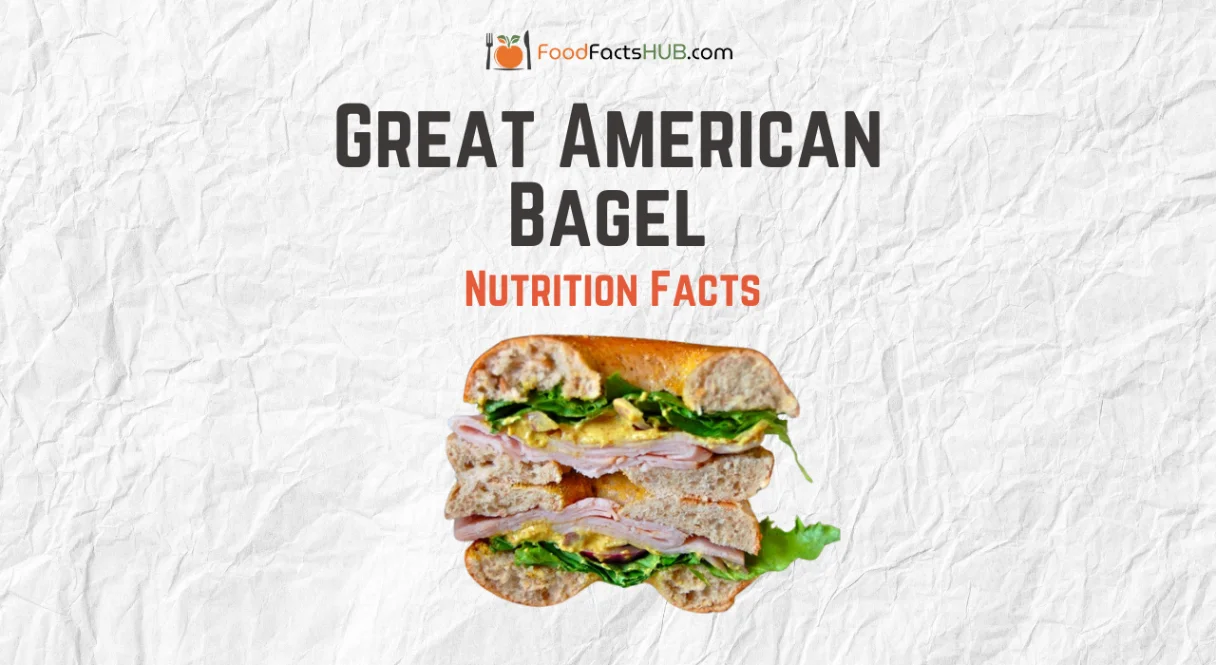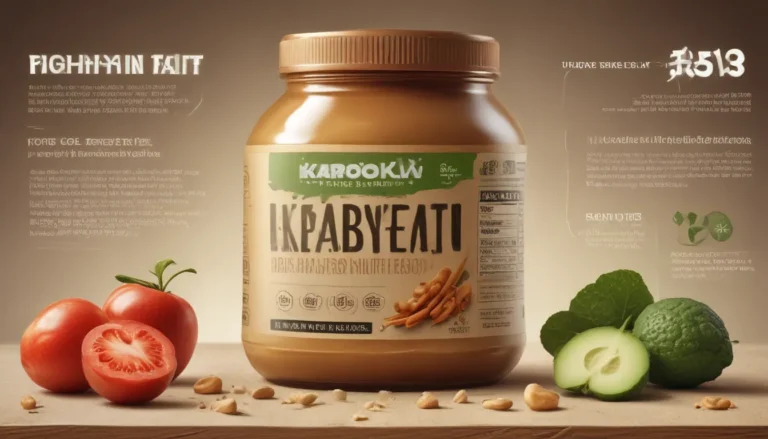The pictures in our articles might not always show exactly what the text is talking about. We use these images to make the article more interesting and eye-catching. They are there to add to the text, but not to replace it or show every detail.
Introduction
Great American Bagel has become a household name for bagel lovers across the country. With their wide variety of flavors and options, it's no wonder they've captured the hearts (and taste buds) of many. But as we indulge in these delicious treats, it's crucial to understand what we're putting into our bodies. This comprehensive guide will delve deep into the Great American Bagel nutrition facts, providing you with all the information you need to make informed choices about your favorite breakfast staple.
Whether you're a health-conscious individual looking to maintain a balanced diet or simply curious about the nutritional value of your go-to bagel, this article will shed light on everything from calorie content to vitamin enrichment. We'll explore how different bagel types and toppings can affect the overall nutritional profile and provide tips on incorporating these tasty treats into a healthy lifestyle.
Key Takeaways
Before we dive into the details, here are the main points you should know about Great American Bagel nutrition facts:
- A typical Great American Bagel contains between 370-430 calories
- Bagels are high in carbohydrates, with a plain bagel containing about 77 grams of carbs
- Surprisingly, bagels provide a decent amount of protein, with approximately 12 grams per plain bagel
- The fat content is relatively low, ranging from 4 to 8 grams per bagel
- Whole wheat bagels offer more fiber, typically containing 3-4 grams of dietary fiber
- Bagels can be high in sodium, with some varieties containing over 600 milligrams
- Many Great American Bagels are enriched with essential nutrients like iron, folic acid, thiamine, and niacin
- Toppings and customizations can significantly alter the nutritional profile of your bagel
Nutrition Table
Here's a quick overview of the nutrition facts for a typical Great American Bagel:
| Nutrient | Amount per Plain Bagel |
|---|---|
| Calories | 370-430 |
| Carbohydrates | 77g |
| Protein | 12g |
| Fat | 4-8g |
| Fiber | 3-4g |
| Sodium | Up to 600mg |
The Energy Equation: Calorie Content
When it comes to Great American Bagel nutrition facts, the calorie content is often the first thing people look at. A typical Great American Bagel packs a substantial energy punch, containing between 370-430 calories. This calorie count can fluctuate based on the bagel type and any additional toppings or fillings.
For instance, a plain bagel might sit at the lower end of this range, while an "everything" bagel, with its mix of seeds and seasonings, could be closer to the upper limit. It's important to note that adding cream cheese or making it into a sandwich can easily push the calorie count over 500.
To put this into perspective, if you're a busy professional grabbing a bagel for breakfast, that plain bagel with cream cheese could account for nearly a quarter of your daily calorie needs, assuming a 2000-calorie diet. This highlights the importance of being mindful of portion sizes and toppings when incorporating bagels into your diet.
The Building Blocks: Macronutrient Breakdown
Carbohydrates: The Primary Fuel Source
When examining the Great American Bagel nutrition facts, it's clear that carbohydrates are the star of the show. Bagels are carbohydrate powerhouses, with a plain bagel typically containing about 77 grams of carbs. This makes them an excellent source of quick energy, which can be beneficial for athletes or those with high activity levels.
However, it's important to balance this high carb content with other nutrients throughout the day. For those following a low-carb diet or managing conditions like diabetes, it may be necessary to adjust portion sizes or opt for lower-carb alternatives.
Protein: The Surprise Element
You might not think of bagels as a protein source, but the Great American Bagel nutrition facts reveal a surprising amount of this essential macronutrient. A plain bagel provides approximately 12 grams of protein, which is comparable to two large eggs. This makes bagels a more substantial breakfast option than many realize.
Protein is crucial for building and repairing tissues, making enzymes and hormones, and supporting overall health. The protein content in bagels can help contribute to your daily protein needs and may help you feel fuller for longer.
Fat: The Low End of the Spectrum
When it comes to fat content, the Great American Bagel nutrition facts show that bagels are relatively low in this macronutrient. The fat content ranges from 4 to 8 grams per bagel, depending on the variety. This low fat content can be beneficial for those watching their fat intake or trying to maintain a low-fat diet.
However, it's important to remember that toppings like cream cheese or butter can significantly increase the fat content of your bagel. If you're watching your fat intake, consider opting for lower-fat toppings or enjoying your bagel plain.
The Digestive Helper: Fiber Content
Fiber is an essential component of a healthy diet, and the Great American Bagel nutrition facts show that these treats can contribute to your daily fiber intake. Whole wheat bagels, in particular, offer more fiber than plain varieties, with a typical bagel containing about 3-4 grams of dietary fiber.
This amount of fiber represents about 10-15% of the daily recommended intake for most adults. Fiber is crucial for digestive health, helping to prevent constipation and promote regular bowel movements. Additionally, fiber can help you feel fuller for longer, potentially aiding in weight management.
The Hidden Salt: Sodium Content
One aspect of the Great American Bagel nutrition facts that might surprise many is the sodium content. Bagels can be surprisingly high in sodium, with some varieties containing over 600 milligrams. This is particularly important for those watching their salt intake due to health concerns like hypertension.
To put this into perspective, if you're having a bagel for breakfast and a sandwich for lunch, you could easily consume over half of your daily recommended sodium intake from these two meals alone. If you're concerned about sodium intake, consider choosing lower-sodium options or balancing your bagel with lower-sodium foods throughout the day.
The Nutrient Boost: Vitamins and Minerals
Many Great American Bagels are enriched with essential nutrients, adding to their nutritional value. The enrichment process helps to replace nutrients lost during processing and adds extra nutritional benefits to your bagel. Some of the key nutrients added include:
- Iron: Essential for oxygen transport in the blood
- Folic acid: Important for cell growth and DNA formation
- Thiamine: Helps convert food into energy
- Niacin: Supports the nervous system and digestive health
This enrichment process makes bagels a more nutritionally complete food, providing a range of essential vitamins and minerals alongside their macronutrient content.
The Game Changer: Customization and Toppings
One of the most significant factors affecting the Great American Bagel nutrition facts is how you choose to customize your bagel. The toppings and additions you select can dramatically alter the nutritional profile of your meal. For example:
- A turkey sandwich on a bagel contains 437 calories
- A tuna salad bagel sandwich has 666 calories and 28 grams of fat
- Adding avocado can increase healthy fat content but also adds about 100 calories
These examples illustrate how important it is to consider not just the bagel itself, but also what you put on it when evaluating its nutritional impact.
The Spice of Life: Bagel Varieties
Great American Bagel offers a range of flavors and types, including whole wheat options. These variations can affect the nutritional content:
- Whole wheat bagels typically offer more fiber and nutrients
- Flavored bagels like cinnamon raisin might have slightly more sugar
- Seed-topped bagels can add small amounts of healthy fats and extra fiber
Understanding these variations can help you make choices that align with your nutritional goals.
FAQ
Are Great American Bagels healthy?
While bagels can be part of a balanced diet, they are high in calories and carbohydrates. Choose whole grain options and be mindful of portion sizes and toppings for a healthier choice.
How many calories are in a Great American Bagel?
A typical Great American Bagel contains between 370-430 calories, depending on the variety and toppings.
Are Great American Bagels high in protein?
Yes, a plain Great American Bagel contains about 12 grams of protein, which is a significant amount for a bread product.
How much sodium is in a Great American Bagel?
Some varieties of Great American Bagels can contain over 600 milligrams of sodium, which is considerable for a single food item.
Can Great American Bagels be part of a weight loss diet?
Bagels can be included in a weight loss diet if consumed in moderation and balanced with other nutrient-dense, lower-calorie foods. Consider having half a bagel or choosing whole grain options.
Conclusion
Understanding the Great American Bagel nutrition facts is crucial for making informed dietary choices. While bagels can certainly be part of a balanced diet, their calorie density and high carbohydrate content mean that moderation is key. The protein content and nutrient enrichment of Great American Bagels do offer some nutritional benefits, but it's important to be mindful of portion sizes and toppings.
By choosing whole grain options, watching portions, and being mindful of toppings, you can continue to enjoy Great American Bagels as part of a healthy, balanced diet. Remember, no single food is inherently "good" or "bad" - it's all about how it fits into your overall dietary pattern and nutritional needs. Armed with this knowledge about Great American Bagel nutrition facts, you can make choices that align with your health goals while still savoring the delicious taste of your favorite bagel.






